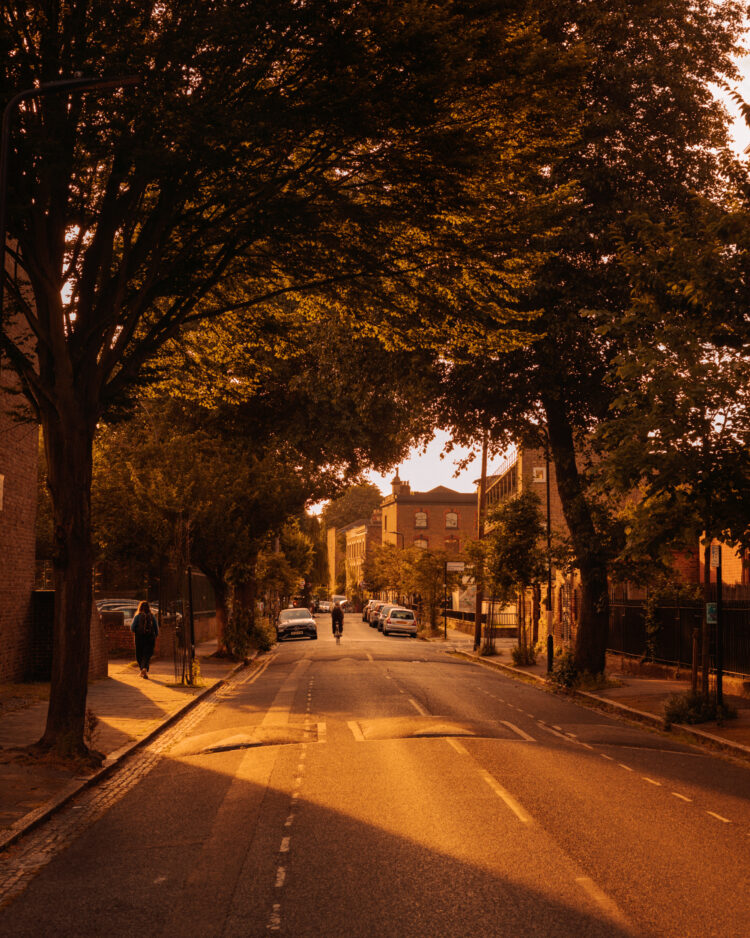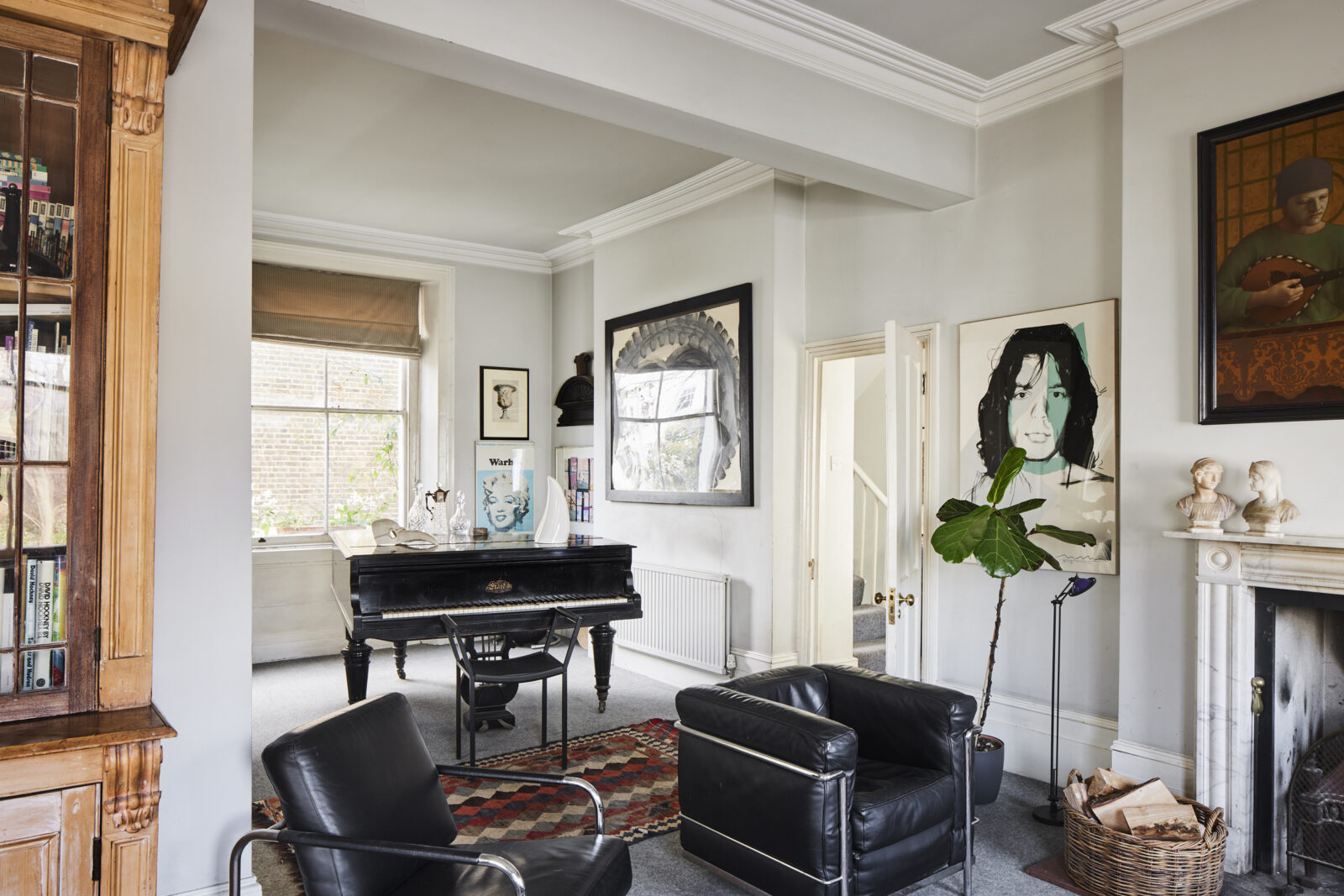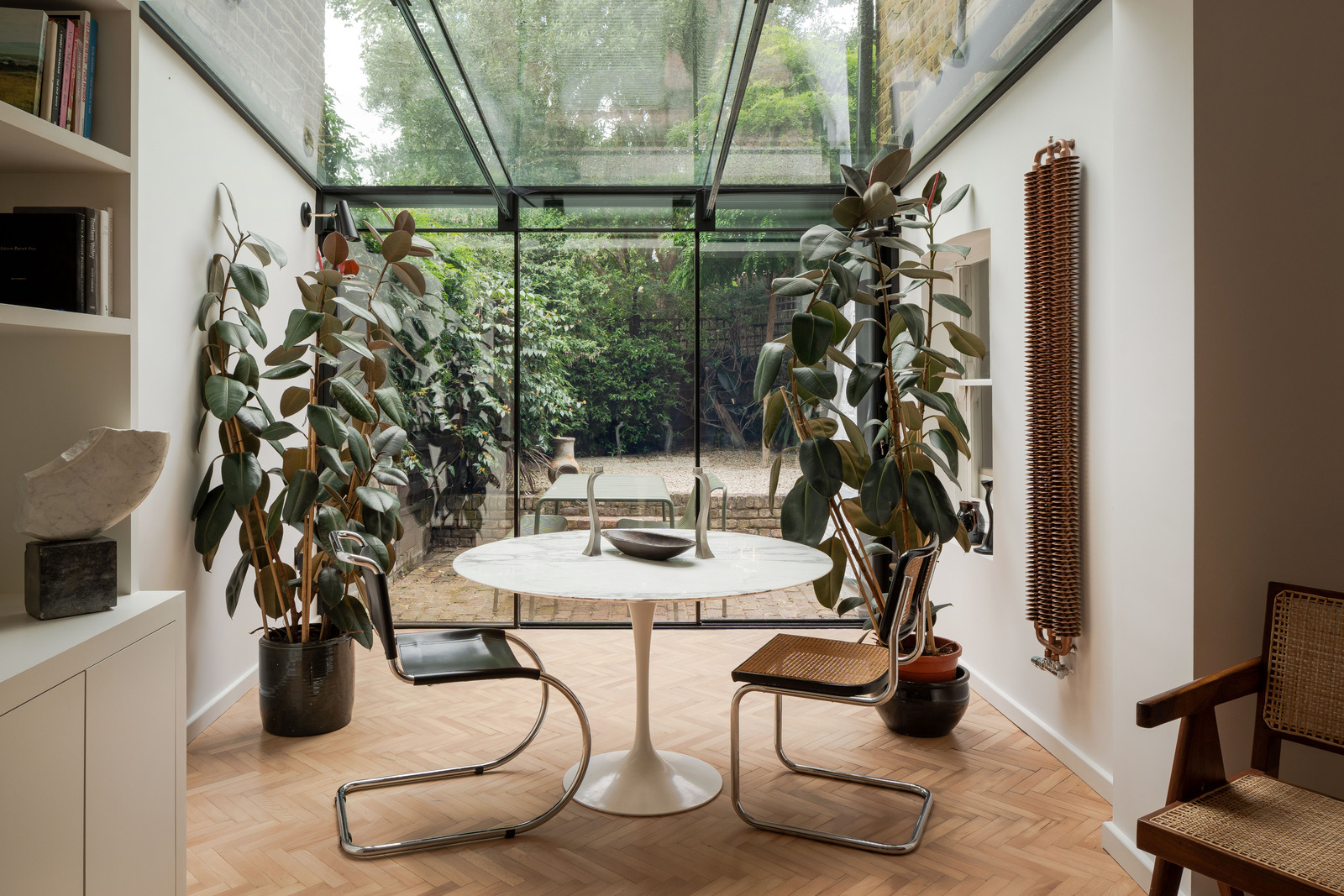A local’s guide to Highbury and Canonbury: design and delicatessens in north London

“Hushed be thy green hilltop, handsome Highbury!” exclaims John Betjeman in his 1960 autobiographical poem Summoned by Bells, which recalls visits to family members in north London’s Italianate villas. Few would dispute the wordsmith’s description of this leafy neighbourhood, with its genteel air that has attracted politicians of all persuasions over the decades.
In some ways, little has changed since Betjeman was born in 1906. The previous century had seen Highbury spring forth from open fields, as rows of Georgian and then Victorian houses formed the streets we know today. Now, it’s a destination with a profusion of good food: there are top restaurants and gastropubs, as well as a wealth of delis and artisan wine shops, sandwiched between the rows of beautiful period homes.
Meanwhile Canonbury, its compact neighbour, has a village-like feel and is also only a short stroll from the culinary delights of Newington Green. Both Highbury and Canonbury have brilliant bus, tube and overground connections – not that you necessarily need them. So deceptively central is this corner of the capital that if you follow Upper Street’s trail of independent stores down to Angel, the centre of London opens up right before you.
There is little to suggest you’ve arrived at this specialist gallery save for the name on the gate – indeed its online reviews document more than a few spontaneous discoveries. Considered something of a local gem, the museum is housed in a Grade II-listed Georgian, its three floors filled with 20th-century Italian art, with a particularly fine collection of Futurist works, plus an exquisite assortment of figurative art and sculpture from 1890 to 1960. Time your trip for to coincide with one of its temporary exhibitions –past ones have included retrospectives of Luigi Pericle and Bice Lazzari – and be sure to stop in at the newly revamped cafe for plates of burrata, aubergine parmigiana and filled focaccia.
That there is a bus stop named for this modernist estate says something of its size (and provides a handy prompt for those stepping off here). Designed by Darbourne & Darke between 1966 and 1976, the Marquess Estate demonstrated a new mode of council housing in Islington: in contrast to the high-rise residential blocks that had dominated the previous decade, it was the first of its kind to largely arrange terraced homes with their own gardens around communal green spaces. Dubbed “a village in the city” at the time, its network of ziggurat-style structures was remodelled in the 1990s.
Home to the Gunners for almost a century, this old football stadium replaced roaring crowds with 650 residents when it was converted into housing in 2010. It’s easy enough to spot: you’ll see ‘Arsenal Stadium’ still stamped in red on the listed Art Deco east and west façades, which were designed in the 1930s by Claude Waterlow Ferrier and William Binnie. Smartly, the pitch has been transformed into communal gardens, while new blocks by Allies and Morrison supplant the north and south stands. First opened by Arsène Wenger himself, it’s a worthy detour for architecture and football fans alike.
The kind of finely tuned Italian everyone hopes will open in their neighbourhood, Trullo is a fixture on lists of London’s best restaurants otherwise dominated by Soho and Shoreditch. The daily menu might include dishes like home-made fettuccine with fennel sausage ragù, or Shetland hake cooked over coals with coco blanc beans and salsa rossa. Every plateful is so beautifully put together, just the interiors of the restaurant itself.
Set among lush residential streets, this Canonbury favourite is part pub, part paean to the barbecue. In practice, that means rib-eyes from rare breeds, and beer-brined chicken, all accompanied by delicious ingredients like charred spring onions, wild-garlic pesto and caper vinaigrette. It’s just as serious about the pub part too, so expect 20 beers on tap and 60 in the bottle, as well as wine sourced from small, family-owned vineyards. The dining space is rustic but refined, with pleasingly worn wooden tables and a specials board worth squinting at.
It would be easy to miss this seafood house, which was set up in a backstreet garage five years ago. A sister restaurant to nearby Jolene and Primeur (those in the know are already nodding in approval), Westerns Laundry once courted controversy for a particularly confronting stuffed duck’s neck and doesn’t shy away from serving fish whole. You get the sense this place enjoys being something of an enigma – “the best restaurant you have never heard of” reads its Instagram bio – and there’s sure to be something here to surprise. Refer to the board for the swiftly changing menu, which rightly prides itself on fresh, seasonal produce.
Some restaurants leave you wondering whether you might make a decent stab at recreating your dish at home, and then there are spots like Sambal Shiok, whose dishes are so tasty that you realise you simply have to. This cheery laksa bar, which makes a star of the spicy Malaysian soup, is the brainchild of Mindy Yin, who spent years hosting supper clubs and pop-ups before setting up shop at this juncture of Highbury and Holloway. If you’re suitably impressed, make a go of it with her cookbook of the same name, which includes recipes developed for the restaurant as well as old family favourites.
Located in a prime spot opposite the Emirates Stadium, this beloved Chinese restaurant relies on a simple premise: around 20 covers, no reservations and some of the speediest service around. It serves street-food-style dishes from the city of Xi’an and the wider Shaanxi province, including hand-pulled biangbiang noodles, and buns filled with spicy beef, and operates a relaxed BYOB policy for those who prefer to arrive with a bottle. Though queues are likely to be longer on match days, we say it’s worth a wait.
Farang is the creation of chef Seb Holmes, a self-confessed ‘farang’, or foreigner, in Thai. It began as a pop-up in what was once his stepfather’s Italian restaurant. Three years later, it’s still there (right down to the incongruous blue-checked tablecloths). The menu is fiery, flavoursome and unforgettable: jungle curry with Yorkshire venison, Cornish cod spring rolls served with coconut chilli jam and the must-order whole crispy seabass with sour fruit salad in lime and mandarin chilli nahm yum. Mop it all up with the turmeric, buttered roti – arguably one of the best things on the menu.
Right across from Canonbury Station, just past the community garden, sits The Snooty Fox, a beloved neighborhood pub with a curved blue façade, as quirky in name as in decor. Inside this unconventional pub, they pay homage to the 1960s, with walls adorned with eclectic memorabilia including posters of ‘60s icons and a vintage jukebox playing 45” vinyl. On the menu is contemporary pub food, featuring a daily rotisserie of free-range chicken and a changing lineup of weekly seasonal small plates, where vegans are not neglected. The tired leather-upholstered sofas lend a cosy charm that makes them all the more relaxing.
On sunny days, punters often spill out onto the street, creating a vibrant hub at the heart of the Canonbury community.
A staple of the Islington food scene, this seafood restaurant does a deft double act as a fishmonger – in fact, that’s how the playfully named Prawn on the Lawn started life. Daily deliveries from Cornwall and Devon ensure fresh supplies of cod, crevettes, mackerel and more, as well as speciality cuts, like sashimi-grade tuna, all artfully displayed in the window to pull in passers-by. If you have time to spare, stop in for a round of oysters.
Situated just off Highbury Corner and opposite Trullo and Prawn on the Lawn (if you’re after a particularly succinct itinerary, head here), Yield is a friendly wine bar and shop. There’s another outpost on Newington Green, as well as an online store with a smart set of filters; if you’re after a vintage from Austria, or want to finally try an orange wine, consider yourself sorted. We like the idea of the bundles, which combine two or three bottles sure to bring something a little different to dinner parties.
You can thank the duo behind this Upper Street showroom for bringing mid-century design to largely disinterested Londoners in the late 1990s. Tony Cunningham and Simon Alderson met while selling from separate stalls at Camden Stables Market, but soon took on a shared space dealing in furniture by the likes of Finn Juhl, Robin Day and Charles and Ray Eames.
A move to this Islington space cemented their status in the design community and they’ve remained here ever since (a second shop, in River Street, opened in 1998). Happily, the atmosphere is resolutely unintimidating. Keep your eyes out for the well judged mix of contemporary pieces among the classics.
No, not a local branch for borrowing a book or two. The near-rhyme of this Highbury spot is a nod to its compendium of natural wine and vinyl. Sample a select edit of organic and low-intervention tipples in-house, or keep your eyes peeled for the next tasting evening. If you’re prone to plucking a bottle off the shelf based on the label alone, there are knowledgeable staff on hand to give some guidance. Rumour has it they’ll even let you select a record to spin.
If you’re uninspired by the same old supermarket veg, defer to Seasons & Blossoms: Highbury’s organic greengrocer and health-food shop, its produce funnelled in from a biodynamic farm in Kent. Launched a decade ago, it stocks an impressive variety of fruit and vegetables, as well as fresh bread, dried goods and delicatessen treats. Perhaps the greatest joy of a trip to the greengrocer’s is buying something you’ve never seen before, so we’d encourage any browser to look beyond the carrots.
An Aladdin’s Cave, Nourished Communities is a community-focused store offering a carefully curated range of products sourced from artisanal producers and growers. Their shelves are stocked with everything from gut health essentials to artisan hot sauces, free-range meats, and organic produce, all reflecting their commitment to ethical sourcing. More than just a store, they serve as a hub where customers gather to learn and share their enthusiasm for healthy living.
Shop Cuvée on Blackstock Road has become a beloved spot for Hackney residents with a thirst for natural wines. An offshoot of the popular north London bistro, Top Cuvée, this launched during lockdown and quickly thrived as a takeaway spot. Now, it stands as a much-loved store offering delicatessens of meats, cheeses and wines, as proclaimed by its bright window graphics. The illustrative wine bottles stand as artworks themselves and. double up perfectly as candle holders.
If you’re a wine enthusiast or simply have a curious palate, Highbury Vintners is for you. Evolving from a traditional off license to an award-winning wine merchant, they now boast a collection of nearly 1,400 wines from across the globe. Since its construction in 1900, the building has been loyal to the wine industry, serving as a wine shop for over a century. They also offer an ever-changing range of 400 different microbrews, specialist beers, and ciders, making it suitable for connoisseurs and casual drinkers alike.
Surrounded by handsome townhouses, this peaceful park is the green heart of Highbury. Declared “open to the public henceforth and forever” in 1885, it’s the largest open space in the borough of Islington and serves as a busy thoroughfare between Highbury & Islington station and the neighbourhoods to the north. Before you set out for a stroll, stop off at French bakery and cafe Le Péché Mignon, which is well placed for picking up coffee and a best-in-the-area croissant, as well as all sorts of picnic-perfect treats.
At less than a mile, this meandering waterside path is certainly not long, but it is lovely – think weeping willows skimming the water and often a surprise appearance from a terrapin or two. Flanked on one side by grand Georgian homes, this is just one stretch of a 17th-century manmade waterway masterminded by Sir Hugh Myddleton, who devised the New River as a way to deliver fresh water from Hertfordshire down into the city.
It’s a truth universally acknowledged that all of the best walks end up at a good pub, so follow the green trail north to south and you can finish the afternoon with a pint at the aptly named Myddleton Arms, a cosy Victorian boozer that does a mean Sunday roast.
Quietly removed from the coveted northern section of Islington’s Upper Street, just west of Canonbury Square, lies this rare duo of Victorian buildings united as one house and garden, Canonbury Lane. With commercial space across its ground and lower ground levels, there is more than 5,500 sq ft of internal space overall. It occupies a wonderful corner site on the peaceful intersection of Canonbury Lane and Tyndale Terrace. Much of the house benefits from the light of three aspects and excellent, elevated views of London from a sweeping fourth-floor extension designed by Studio 54 Architecture.
Designed by Paul Archer Design in 2019, Ecclesbourne Road is an extraordinary two-bedroom house uses stepped levels to gently delineate its open-plan living spaces. Its perforated brick façade is a striking presence on Ecclesbourne Road, which sits between Canonbury and De Beauvoir. Inside, sightlines across the immaculate living spaces draw the eye towards a rear courtyard planted with mature tree ferns and a palm tree.
This handsome four-bedroom Georgian house, with a mature, tiered garden, is situated in the Barnsbury Conservation Area. Liverpool Road III was built in the 1810s as part of a Regency residential boom in Islington; a shop front was added later on, which has since been beautifully refashioned into a hall and private guest bedroom. Carefully renovated with an exacting eye for detail, the house extends to over 2,000 sq ft over four storeys with a stunning full-width balcony terrace on the topmost floor.
This beautiful apartment is set in a handsome brick-fronted Victorian townhouse on Morton Road, a quiet, tree-lined no-through road in Islington. Interiors are pared back, accentuating the light that pours into the cleverly conceived living spaces that open directly onto a large, mature private garden. Morton Road II is excellently located in the East Canonbury Conservation Area, close to De Beauvoir, Dalston and Newington Green, as well as the New River Walk, Shoreditch Park and Highbury Fields.








































































